Want to lose fat without feeling hungry all day? A protein diet and weight loss plan can help. Protein is a macronutrient your body uses to build and repair tissues, and it has a unique effect on hunger and calorie burn.
Protein helps you feel full, keeps muscle while you diet, and supports steady fat loss. It is not the same as low carb or low fat. You can eat carbs and fats, you just make protein the star. In this guide, you will learn how protein works, how much to eat, the best foods and portions, a simple meal plan, and the mistakes to avoid. The tone is friendly, the science is light, and the steps are easy to follow.
How Protein Helps You Lose Weight Without Feeling Hungry
Protein helps you in three big ways. First, it boosts fullness. Higher protein meals raise satiety hormones and lower hunger hormones. That means fewer cravings and less late night snacking, which makes eating fewer calories much easier.
Second, protein has a higher thermic effect of food. Your body burns energy to digest food, and protein costs more to process than carbs or fat. Roughly 20 to 30 percent of protein calories are burned during digestion, compared to about 5 to 10 percent for carbs and 0 to 3 percent for fat. You do not have to do anything special, your body does the work.
Third, protein protects muscle while you diet. When you cut calories, your body might tap into muscle for energy. Enough protein helps hold on to muscle, which keeps your daily calorie burn higher. More muscle also helps with long term weight control since it raises your resting metabolism.
Here is a simple intake guide. Aim for 0.7 to 1.0 grams of protein per pound of your target body weight, about 1.6 to 2.2 grams per kilogram. For a 180 pound target weight, that is about 125 to 180 grams per day. Spread protein across 3 to 4 meals. Aim for 25 to 40 grams per meal. Include protein after workouts, and add a protein rich snack when there are long gaps between meals. If you have kidney disease, talk to your doctor first. Used well, a protein diet and weight loss plan is simple and effective.
Protein keeps you full and cuts cravings
Protein slows digestion and triggers fullness signals that last. You tend to snack less, and the urge for sweets fades. That reduces extra calories without tracking all day. Try this swap at breakfast: Greek yogurt with berries and chopped nuts instead of sugary cereal. You get more protein, more fiber, and steadier energy.
Protein boosts calorie burn and protects muscle
The thermic effect of food is the energy your body uses to digest and process what you eat. Protein has the highest thermic effect, about 20 to 30 percent of its calories. Keeping muscle matters because muscle burns calories even at rest. Pair protein with light strength training to make this effect stronger and support long term fat loss.
How much protein per day for weight loss
Use this range: 0.7 to 1.0 grams per pound of target body weight. Quick calculator tip, body weight goal times 0.7 is your minimum. Hit 25 to 40 grams per meal, and drink enough water to support digestion and recovery.
Best High Protein Foods and Portions for Fat Loss
Protein rich foods can fit any budget or taste. Choose lean options most of the time, and use simple portions you can eyeball. A palm of protein equals about 20 to 30 grams for most people. A good label target is at least 10 grams of protein per 100 calories for meals. For flavor, season with herbs, spices, citrus, vinegar, and low sugar sauces. You will add taste without many calories.
Organize your cart by animal proteins, plant proteins, and smart snacks. Mix and match to hit your numbers. Most meals feel complete with a palm of protein, two fists of veggies, a cupped hand of carbs, and a thumb of healthy fats.
Lean meats, fish, eggs, and dairy you can trust
- Chicken breast, 3 oz, about 26 g protein. Choose skinless if calories are tight.
- Turkey breast, 3 oz, about 25 g protein. Deli turkey can work, watch sodium.
- Canned tuna, 1 can, about 22 g protein. Packed in water to cut calories.
- Salmon, 3 oz, about 22 g protein. Rich in omega 3s, great for heart health.
- Shrimp, 3 oz, about 20 g protein. Very lean, cooks fast.
- Egg, 1 large, about 6 g protein.
- Egg whites, 3 large, about 10 g protein. Low calorie protein boost.
- Greek yogurt, 1 cup, about 20 g protein. Choose plain, add fruit for sweetness.
- Cottage cheese, 1/2 cup, about 14 g protein. Low fat if you need to cut calories.
Quick note, pick lower fat cuts when you need to keep calories down, then add flavor with spices and sauces.
Plant proteins for weight loss that still taste great
- Firm tofu, 3 oz, about 8 to 10 g protein.
- Tempeh, 3 oz, about 16 g protein, hearty texture.
- Edamame, 1 cup, about 17 g protein, high fiber.
- Lentils, 1 cup cooked, about 18 g protein.
- Black beans, 1 cup, about 15 g protein.
- Chickpeas, 1 cup, about 14 g protein.
- Seitan, 3 oz, about 20 g protein, wheat based.
- Quinoa, 1 cup cooked, about 8 g protein, complete protein.
Tip, pair legumes with tofu or tempeh to reach 25 to 35 g protein per meal. Add veggies and a grain to round out the plate.
Protein snacks and on the go options
- Protein shake, 25 to 30 g protein.
- Jerky, 1 oz, about 9 g protein, watch sodium.
- String cheese, about 6 to 8 g protein.
- Greek yogurt cup, about 12 to 15 g protein.
- Roasted edamame, 1/4 cup, about 13 g protein.
- Cottage cheese cup, about 14 g protein.
Check labels for added sugar and high sodium. Aim for 15 to 30 g protein per snack if hunger runs high.
Portion guide and label hacks
- Hand guide: palm of protein, 20 to 30 g; fist of veggies; cupped hand of carbs; thumb of fats.
- Label tips: choose items with more protein than sugar; aim for at least 10 g protein per 100 calories for meals; at least 15 g protein for bars or shakes.
Simple 7-Day High Protein Meal Plan Template
You do not need a rigid plan to see progress. Use these mix and match formulas and repeat the meals you like. Keep main meals around 400 to 600 calories, snacks around 150 to 300 calories. Hit 25 to 40 g protein at each meal. Adjust carbs and fats based on hunger and activity.
Swap proteins as needed. Use chicken, turkey, fish, eggs, tofu, tempeh, or beans. For budget, lean on canned tuna, eggs, dry beans, and bulk Greek yogurt. For vegetarian, double up plant proteins to hit your target.
Meal prep makes this easy. Spend an hour cooking staples, then build plates in minutes. A short grocery list and a simple prep plan save time and stress.
Protein-rich breakfasts under 400 calories
- Greek yogurt bowl with berries and nuts, about 25 to 30 g protein.
- Veggie omelet with egg whites and 1 to 2 whole eggs, about 25 to 35 g protein.
- Cottage cheese with fruit and cinnamon, about 25 to 30 g protein.
- Tofu scramble with salsa and peppers, about 25 to 30 g protein.
- Overnight oats with whey or soy isolate, about 25 to 30 g protein.
Lunch and dinner plates that keep you full
Use the plate method, palm of protein, 2 fists of veggies, cupped hand of carbs, thumb of healthy fats.
- Chicken, quinoa, and broccoli bowl.
- Salmon, rice, and asparagus.
- Turkey chili with beans.
- Tofu stir fry with brown rice.
- Shrimp taco bowls with slaw.
Target 30 to 40 g protein per plate. Add extra veggies for volume if you are hungry.
Budget and vegetarian swaps
- Use canned tuna, eggs, dry beans, frozen veggies, and bulk Greek yogurt to save money.
- Plant swaps: tempeh instead of chicken, lentil chili instead of beef, edamame fried rice instead of takeout.
- Season well with garlic, chili powder, cumin, soy sauce, miso, and citrus.
- Batch cook proteins and grains, then mix with different sauces during the week.
Grocery list and 1-hour meal prep plan
- Proteins: chicken breast, eggs, Greek yogurt, canned tuna, tofu or tempeh.
- Carbs: rice, quinoa, oats, tortillas, potatoes.
- Veggies and fruit: mixed greens, broccoli, peppers, onions, berries.
- Fats and flavor: olive oil, salsa, herbs, low sugar sauces.
Meal prep in one hour:
- Bake a sheet pan of chicken with simple spices.
- Cook a pot of rice or quinoa.
- Roast a tray of mixed veggies.
- Chop fresh veggies for salads and stir fries.
- Portion yogurt and snacks into grab and go containers.
Store food in clear containers so you see what to use.
Mistakes to Avoid, Safety Tips, and FAQs
Small tweaks prevent stalls and keep you feeling good. Hydration, fiber, and smart carbs matter. Strength training helps hold muscle while you cut calories. If progress slows, check portions and activity before making big changes. If you have a medical condition, talk with your doctor before starting a new eating plan, including any protein diet and weight loss approach.
Common mistakes that slow fat loss
- Eating too few total calories: you feel drained, then overeat later. Fix, set a small deficit and plan meals you enjoy.
- Skipping carbs and losing energy: carbs fuel training. Fix, include a cupped hand of carbs with meals.
- Forgetting fiber and veggies: low fiber can spike hunger. Fix, aim for 25 to 35 g fiber daily.
- Not drinking enough water: dehydration mimics hunger. Fix, keep a bottle nearby and sip often.
- Relying only on shakes: whole foods keep you full. Fix, use shakes to fill gaps, not as every meal.
Simple macro targets: 25 to 35 percent protein, 35 to 45 percent carbs, the rest fats.
Stay safe and feel good on higher protein
Drink 2 to 3 liters of water each day. Increase fiber to 25 to 35 g per day to support digestion. Add a pinch of salt if you feel light headed, especially in hot weather or after sweaty workouts. People with kidney disease or gout should talk to a doctor first. Make slow changes, give your body time to adapt.
Can you build muscle and lose fat at the same time?
Yes, you can. Eat enough protein, keep a small calorie deficit, and train 2 to 4 days per week. Use progressive overload with simple moves like squats, presses, rows, and deadlifts. Walk daily, and sleep 7 to 9 hours each night. Consistency beats perfection.
What to do when the scale stalls
Follow this 3 step plan.
- Check weekly averages, not daily swings. Weigh 3 to 4 mornings per week and average them.
- If no change for 2 weeks, tighten portions by 150 to 200 calories per day. Keep protein steady.
- Raise steps to 8,000 to 10,000 per day.
Track non scale wins, like waist size, photos, energy, and workouts. Stay consistent for another 2 weeks before you change more.
Conclusion
Protein pulls a lot of weight. It curbs hunger, protects muscle, and helps you lose fat at a steady pace. Set a clear target, about 0.7 to 1.0 grams per pound of goal body weight. Then build meals around protein, and use simple portions to keep calories in check.
Your next steps are simple.
- Set your daily protein target.
- Pick a protein for each meal using the food list.
- Follow the 7 day template, then adjust based on hunger, energy, and results.
Start today, keep notes, and check in with yourself next week. Small steps add up, and a protein-first plate makes the process easier than you think.
Related post:
- Exercise Routine to Lose Weight at Home
- Best Workout to Lose Stomach Fat
- Lose Weight Without Counting Calories
Protein-Packed Weight Loss: Your FAQ
How does protein help with weight loss?
Protein keeps you full, reduces cravings, and helps control calories. It also has a higher thermic effect, which means your body burns more calories digesting it. Most importantly, it protects muscle while you lose fat.
How much protein should I eat to lose weight?
Aim for 0.7 to 1.0 grams per pound of goal body weight, or 1.6 to 2.2 grams per kilogram. Start at the lower end if you are new to higher protein, then adjust based on hunger, energy, and progress.
Do I need to eat protein at every meal?
Yes, spreading protein through the day helps muscle repair and fullness. Target 20 to 40 grams per meal, and include a protein snack if helpful.
Which protein sources are best?
Pick lean meats, fish, eggs, Greek yogurt, cottage cheese, tofu, tempeh, edamame, lentils, beans, and protein powders. Mix animal and plant sources for nutrients and variety.
Can a high-protein diet hurt my kidneys?
Healthy people can handle higher protein intake. If you have kidney disease, talk with your doctor or a dietitian. Drink enough water and include fiber-rich foods.
Will eating more protein make me bulky?
No. Building large muscle needs heavy training and a calorie surplus. Higher protein while dieting helps you keep the muscle you already have.
What if I follow a vegetarian or vegan diet?
You can hit your protein goals with tofu, tempeh, seitan, edamame, lentils, beans, quinoa, soy milk, and plant protein powders. Combine sources to get enough essential amino acids.
Is protein timing important for fat loss?
Total daily protein matters most. That said, eating protein within 2 hours after training supports recovery. A steady intake across the day supports satiety.
How do I balance protein with carbs and fat?
Protein anchors the meal, then add fiber and healthy fats. Try this plate: half veggies, a palm to hand-sized protein, a fist of whole grains or starchy carbs, and some healthy fat.
Can I eat too much protein?
Extremely high intakes crowd out carbs, fats, and fiber, which can hurt performance and digestion. Most people do well staying within the ranges above. Watch for low energy, constipation, or bad breath, then adjust.
Do I need a protein shake to lose weight?
No, food first works well. Shakes are convenient when you are short on time or appetite. Choose a whey, casein, or plant blend with minimal added sugar.
What are easy high-protein meal ideas?
- Breakfast: Greek yogurt with berries and nuts, or eggs with veggies.
- Lunch: Chicken or tofu salad with beans and olive oil, or tuna on whole grain.
- Dinner: Salmon, quinoa, and roasted broccoli, or lentil curry with brown rice.
- Snacks: Cottage cheese and fruit, jerky, edamame, hummus with veggies.
How do I manage hunger on a protein diet?
Include fiber from veggies, fruit, legumes, and whole grains. Do not skimp on water. Add healthy fats, like olive oil or avocado, to slow digestion. Eat regular meals.
Will a protein diet work without exercise?
You can lose weight with diet alone, but results improve with movement. Add resistance training 2 to 4 days per week to keep muscle and shape your body.
How fast will I lose weight with higher protein?
A safe pace is 0.5 to 1 percent of body weight per week. Faster loss often leads to muscle loss and rebound weight gain.
What are signs I am getting enough protein?
Stable energy, better workout recovery, strong nails and hair, less hunger, and steady or improved strength. If you feel weak or hungry all the time, increase protein.
How do I set calories with a high-protein plan?
Estimate your maintenance calories, then create a 300 to 500 calorie daily deficit. Set protein first, fill the rest with carbs and fats based on preference and activity.
Are low-carb and high-protein the same?
No. You can eat high protein with any carb level. Choose carbs based on training needs, blood sugar control, and what helps you stay on track.
What about fiber while eating more protein?
Keep fiber high for gut health and fullness. Aim for 25 to 35 grams per day from veggies, fruit, legumes, oats, and whole grains.
Any budget-friendly protein tips?
Buy in bulk, use eggs, canned tuna, beans, lentils, and frozen chicken or fish. Choose store brands. Cook a big batch, then portion and freeze.


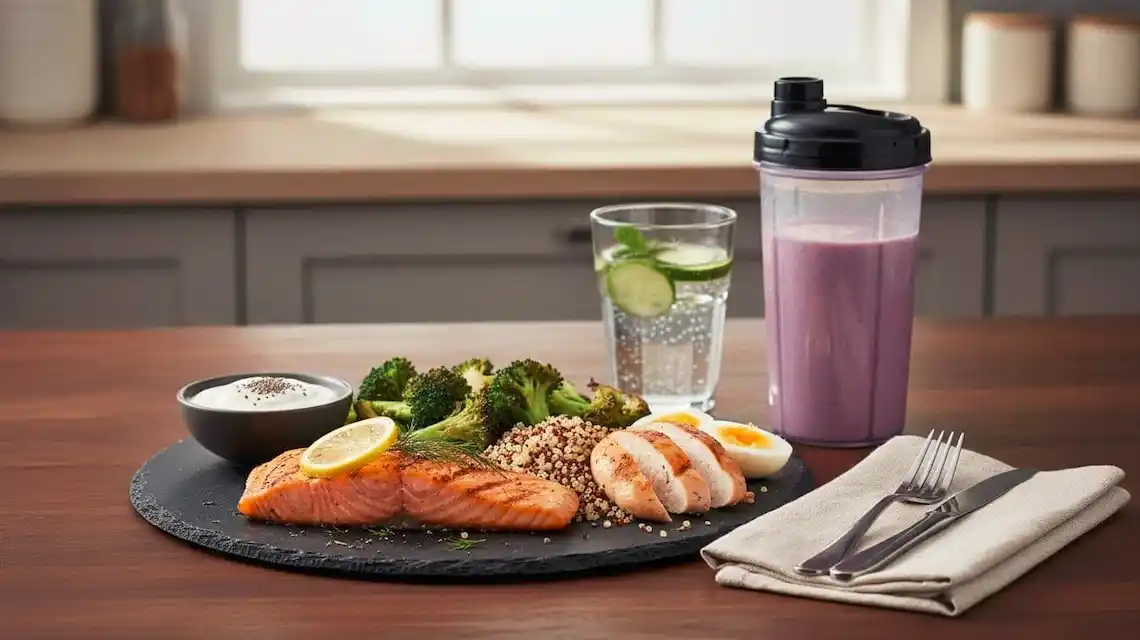

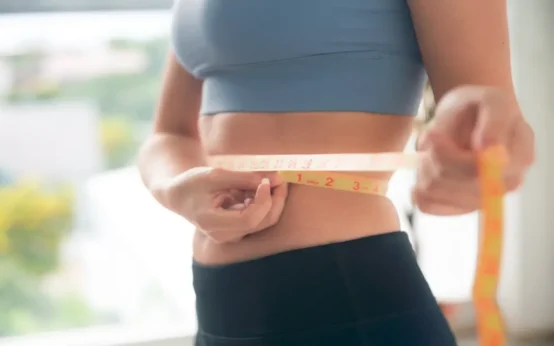 How to Start a Weight Loss Program
How to Start a Weight Loss Program 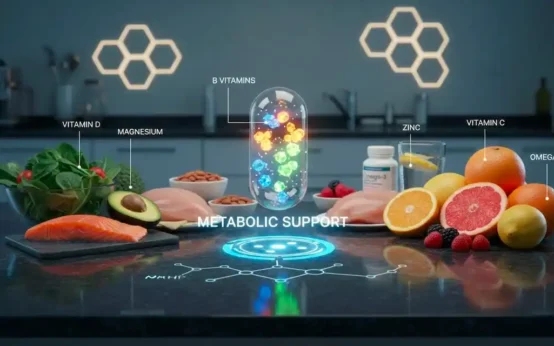 What Vitamin Deficiency Makes It Hard to Lose Weight?
What Vitamin Deficiency Makes It Hard to Lose Weight? 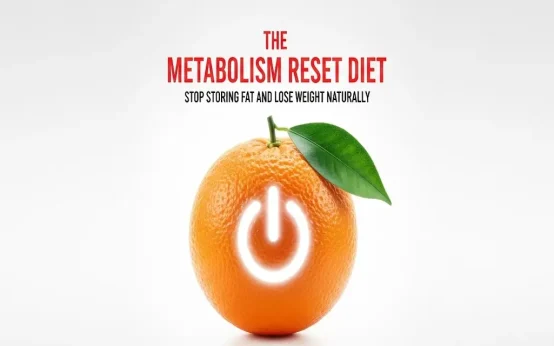 Improve Fat Burning With a Metabolism Reset Diet
Improve Fat Burning With a Metabolism Reset Diet 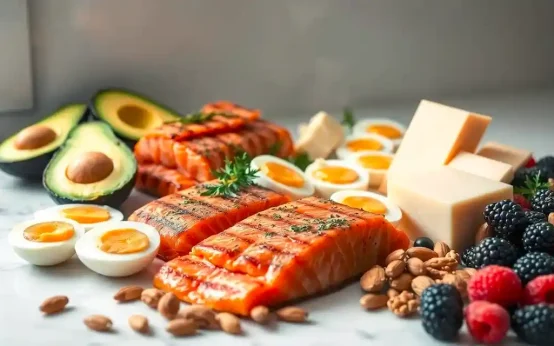 The Best Food for the Keto Diet
The Best Food for the Keto Diet  How to Avoid Loose Skin When Losing Weight
How to Avoid Loose Skin When Losing Weight 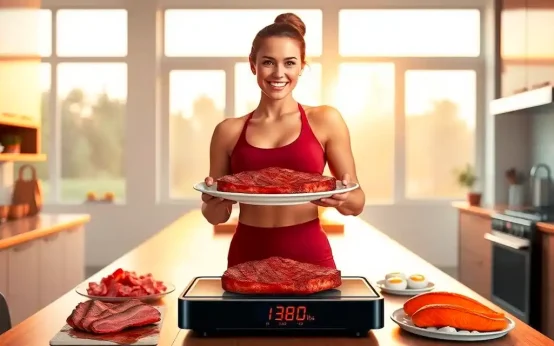 Can You Lose Weight on Carnivore Diet?
Can You Lose Weight on Carnivore Diet?